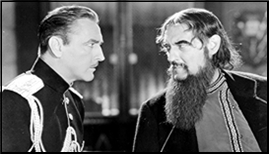Wed 1 Jan 2020
A Western Fiction Review by Dan Stumpf: BRETT McKINLEY – Just Plain Scum.
Posted by Steve under Reviews , Western Fiction[6] Comments
BRETT McKINLEY – Just Plain Scum. Cleveland Publishing Co., Australia, digest-sized paperback original, no date stated.
Okay, I just couldn’t resist a title like that. Even on a saddle stitched booklet of fewer than a hundred pages wrapped in an indifferent cover. Ultimately, I had to read it, and…
Well for what it is, Just Plan Scum ain’t bad. It ain’t good, mind you, but it recalled to me the Doc Savage books I enjoyed in Junior High, with characters as colorful and flat as the pages in a comic book, and a fast-moving, unlikely story told in plain, functional prose.
Scum starts well, with
“What?â€
“There’s a feller here wants to fight you.â€
“Why?â€
“He reckons you’re flash.â€
“He’s right.â€
“He still wants to fight you.â€
I like that. It promises imminent action and a bit of humor, and it could go anywhere from there.
Where it goes is to a band of free-booting veterans of the Civil War—Yanks and Rebs alike — known as The Company, guided by the loose but firm reins of Johnny Lee, a pulp hero in the best tradition: invincible, right-minded and colorfully costumed. He’s also surrounded by a few faithful lieutenants, each with a special trait that recalls the myrmidons of Doc Savage or the Shadow.
The story that follows serves them well: raiding Apaches, lovely women, brave soldiers, a double-dealing Officer, and action action action action. It left a cloying aftertaste, and the vague suspicion that too much of this would give me brain decay, but that was quickly rinsed by reading a real book.
And as I put Just Plain Scum on the shelf somewhere between Kiss Tomorrow Goodbye and Hud, it was with a sense of deep down pleasure that my library is big enough for all three.



